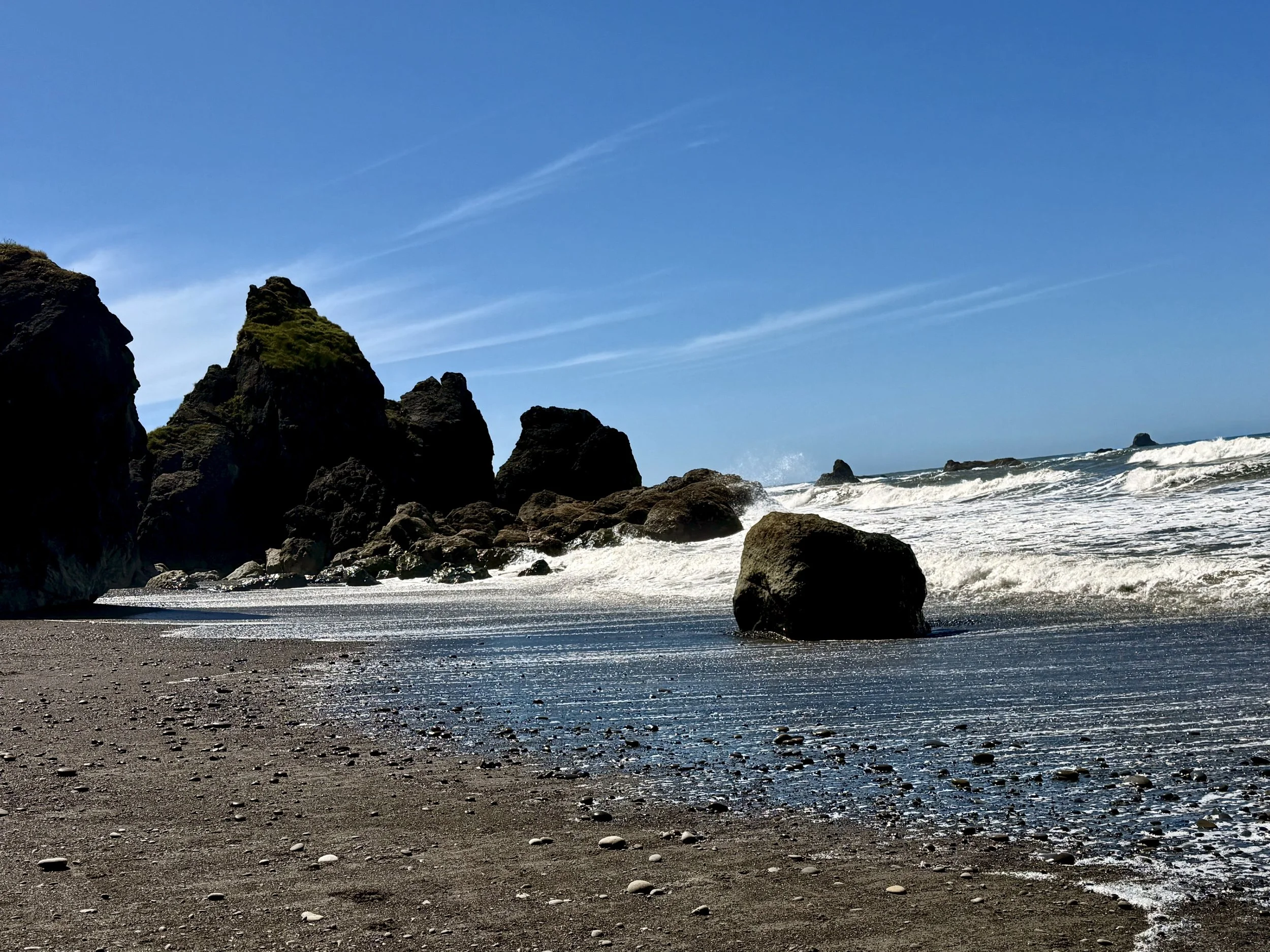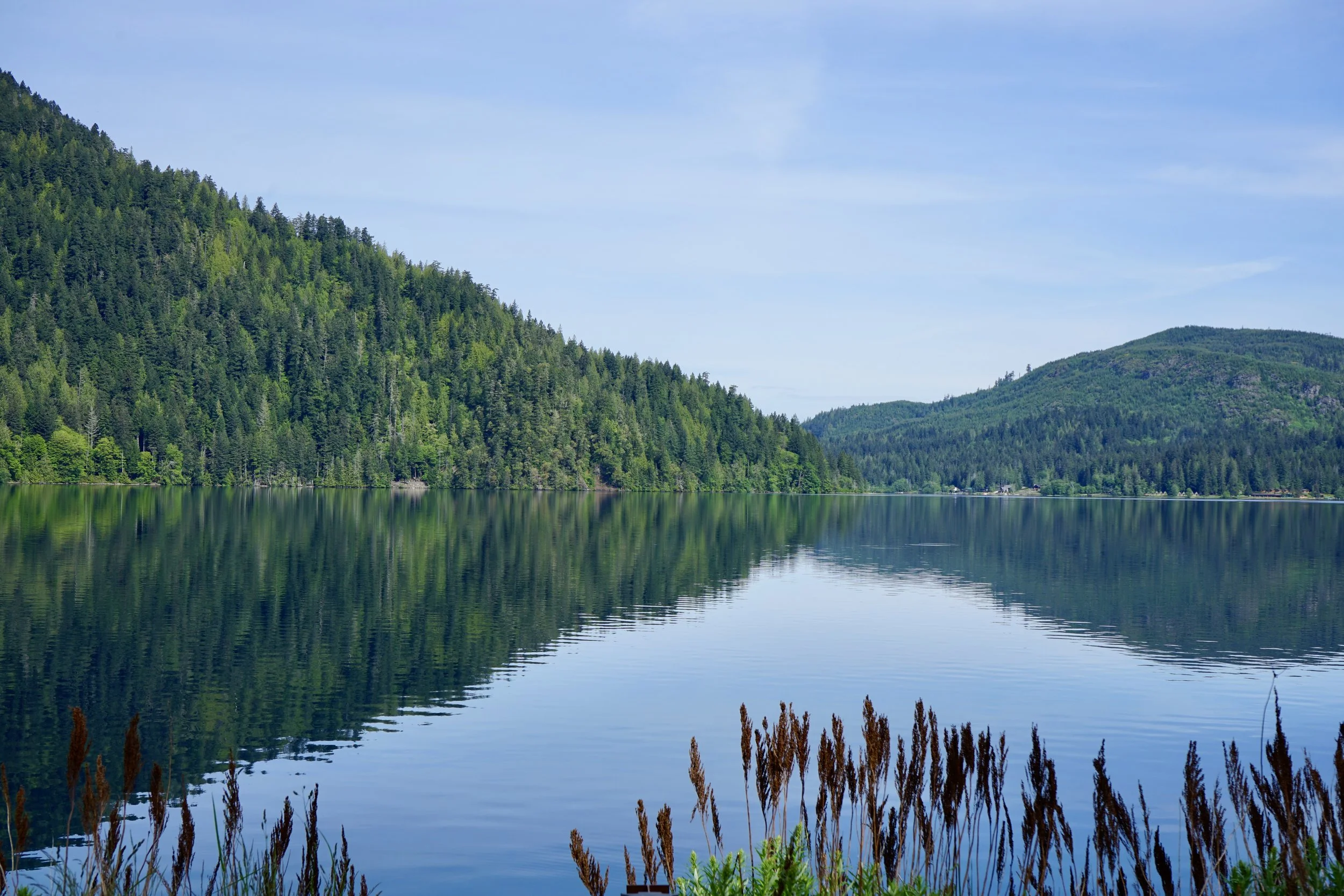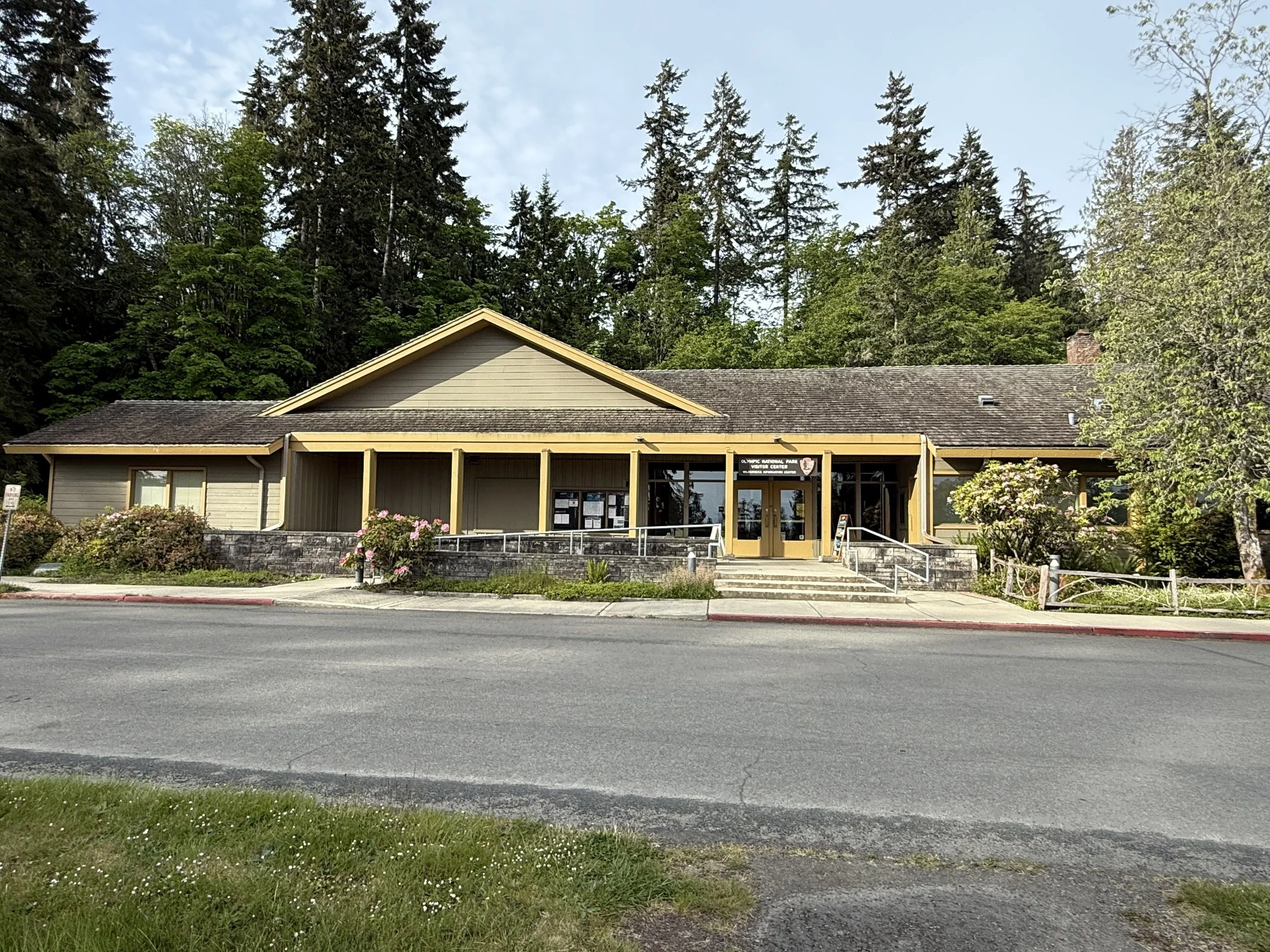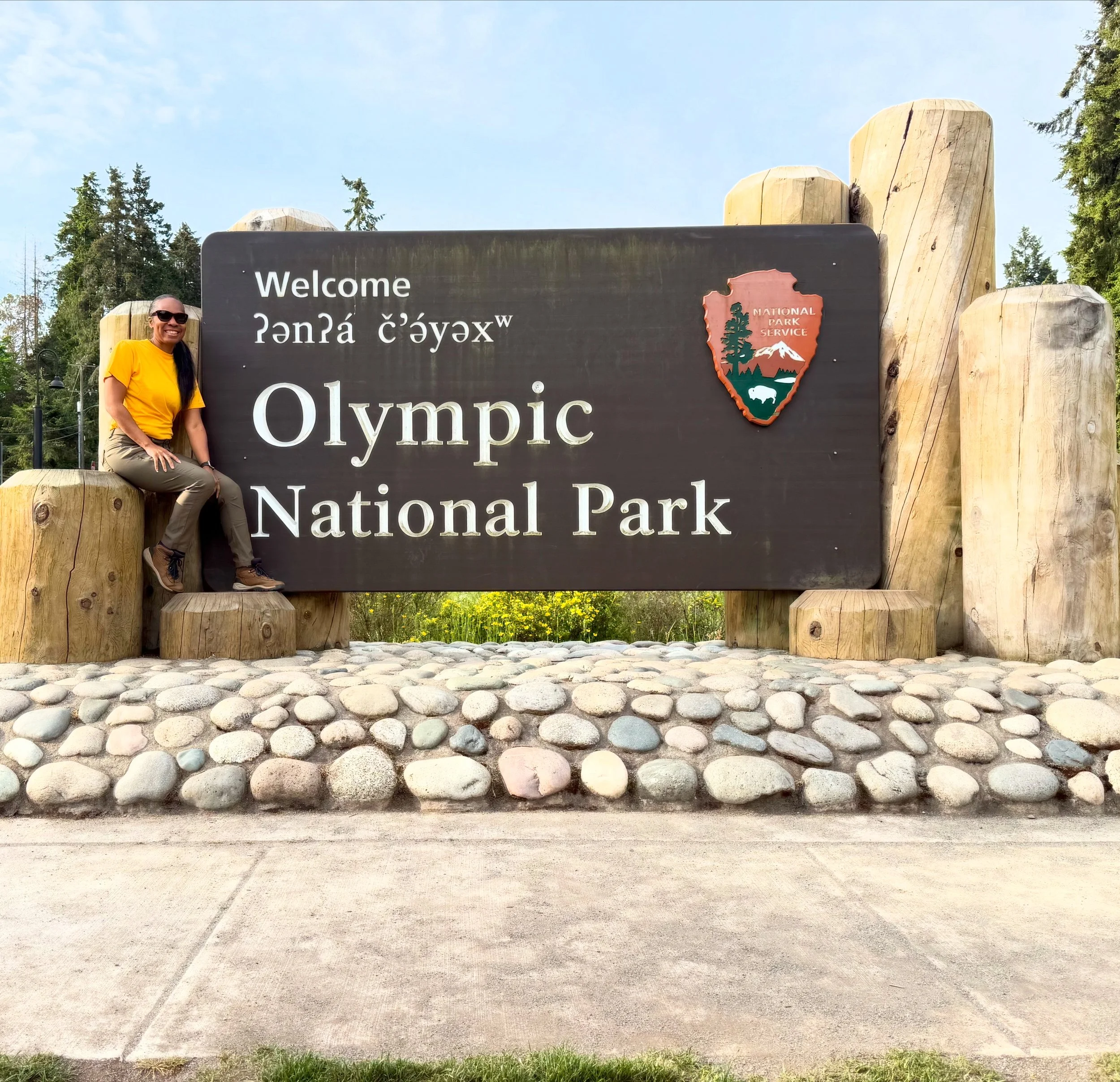# 30 Olympic National Park, Washington
Ruby Beach
My trip to Olympic National Park kicked off on a crisp Wednesday morning in May, leaving from Seattle. The drive takes about 2.5 hours — not too bad, but here’s the thing: with a park as massive as Olympic, you really have to decide what you want to focus on before you even get there. You’ve got mountains, rainforests, and rugged coastline all packed into one park. It’s a lot to cover.
Since I’d spent the past few days surrounded by mountain scenery, I decided to switch things up and head for the coast. Ruby Beach was my pick.
The drive in went smoothly, and I actually arrived before the visitor center opened. So I stopped, took my usual photo by the park sign, and then hung out in the car for about 45 minutes. Luckily, they had maps outside, so I grabbed one and sketched out my route. That’s when I realized Ruby Beach was still another two hours away. Oof. But by then, I was fully committed.
When the visitor center opened at 9 a.m., I went in, got my passport stamp, and hit the road. Along the way, I passed signs for all the major park highlights — Hurricane Ridge, Hoh Rainforest, Sol Duc — and even crossed out of the national park into the national forest for a stretch. Olympic is truly massive.
Because it was a weekday, the park wasn’t crowded at all. When I finally made it to Ruby Beach, I hiked the short trail down to the shore. The beach was littered with huge driftwood logs, turning the approach into a bit of an obstacle course. But honestly, the effort was worth it.
The beach itself was stunning — a rocky shoreline, dramatic sea stacks, and tidal pools perfect for exploring. I could’ve easily stayed there all afternoon, just wandering and soaking it in.
I had hoped to squeeze in a few other stops, maybe check out the rainforest or the alpine sections, but time wasn’t on my side. And that’s okay. Olympic is one of those places you know you’ll come back to. It’s not a one-and-done park — it’s a place that stays on your list, calling you back.
Lake Crescent
A Bit About the Park
Olympic National Park, established in 1938, is one of the most ecologically diverse parks in the United States. It protects nearly a million acres of wilderness on Washington’s Olympic Peninsula, covering everything from snowcapped mountains to old-growth rainforests to wild Pacific coastline. It’s been designated both a UNESCO World Heritage Site and an International Biosphere Reserve, thanks to its rare mix of ecosystems.
Fun fact: several species here are found nowhere else on Earth, thanks to the isolation of the Olympic Mountains.
Main Visitor Center
Visitor Center Information
Here’s a full list of the visitor centers and ranger stations spread across the park:
Olympic National Park Visitor Center (Main)
3002 Mount Angeles Road, Port Angeles, WA 98362
• Main hub for maps, info, and ranger talks. Best first stop if you’re coming from Seattle or heading toward Hurricane Ridge.
Hurricane Ridge Visitor Center
Hurricane Ridge Road, Port Angeles, WA
• Seasonal visitor center up in the mountains. Check road status — it’s often snowed in outside summer.
Hoh Rain Forest Visitor Center
18113 Upper Hoh Road, Forks, WA 98331
• Focused on the temperate rainforest area. Good spot to pick up trail details for the Hall of Mosses and Spruce Nature Trail.
Passes and Fees
• Entrance Fee: $30 per vehicle (good for 7 days)
• America the Beautiful Pass: Accepted and covers entrance
• Reservations generally aren’t required to enter, but check the National Park Service website for any seasonal updates or alerts.
Most Visited Places in the Park
• Hurricane Ridge — Sweeping alpine views and hiking trails
• Hoh Rain Forest — Moss-draped trees and otherworldly greenery
• Sol Duc Valley — Waterfalls and natural hot springs
• Ruby Beach — Sea stacks, rocky shorelines, and dramatic Pacific scenery
• Lake Crescent — Glacier-carved lake with crystal-clear water
Best Hikes
• Hurricane Hill Trail (3.2 miles round trip) — Paved trail with panoramic mountain views
• Hoh Rain Forest Trail (up to 6 miles, with shorter loops available) — A walk through dense, mossy rainforest
• Sol Duc Falls Trail (1.6 miles round trip) — Quick hike to a powerful waterfall
• Second Beach Trail (4 miles round trip) — Coastal trail with tidepools and sea stacks
• Marymere Falls Trail (1.8 miles round trip) — Easy, family-friendly trail to a scenic waterfall
Best Photo Spots
• Ruby Beach at low tide, especially around sunset
• Hurricane Ridge viewpoints on a clear day
• Inside the Hoh Rain Forest, under the moss-hung trees
• Sol Duc Falls from the footbridge
• Lake Crescent, viewed from the shoreline or dock
Accessibility
Olympic’s accessibility varies depending on the area. Hurricane Ridge offers paved viewpoints and the Hurricane Hill trail, while the main visitor center is ADA-compliant. Some waterfall trails, like Sol Duc and Marymere, are relatively gentle but not fully paved. Coastal spots like Ruby Beach are trickier, thanks to the driftwood and rocky approaches. Always check the park’s accessibility page if you have mobility needs.
Other Helpful Info
• Weather: Expect everything — fog, rain, snow (even in late spring), and sun. Bring layers.
• Food & Gas: Limited services inside the park; stock up before you enter.
• Cell Signal: Spotty at best. Download maps or bring a paper backup.






